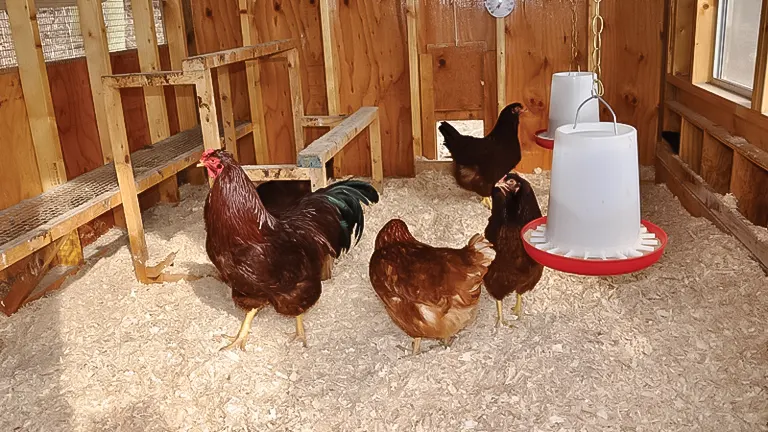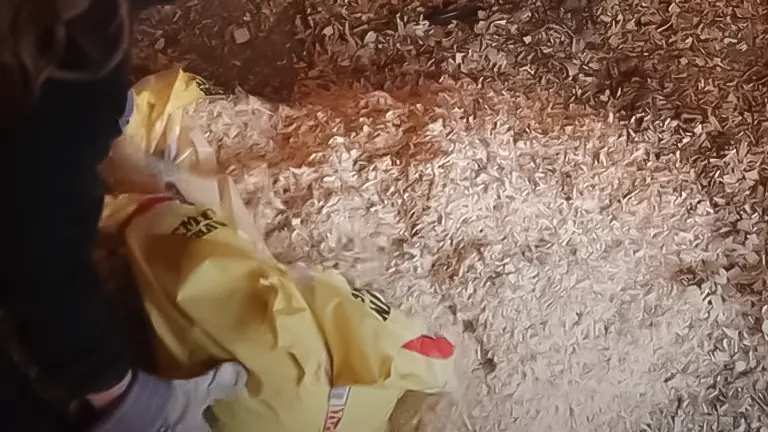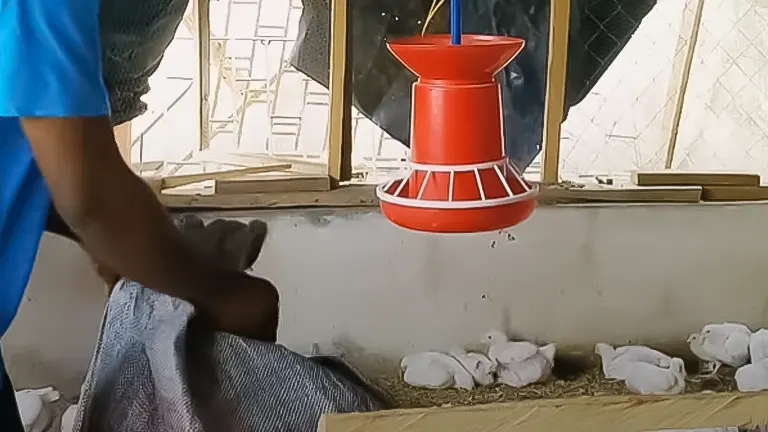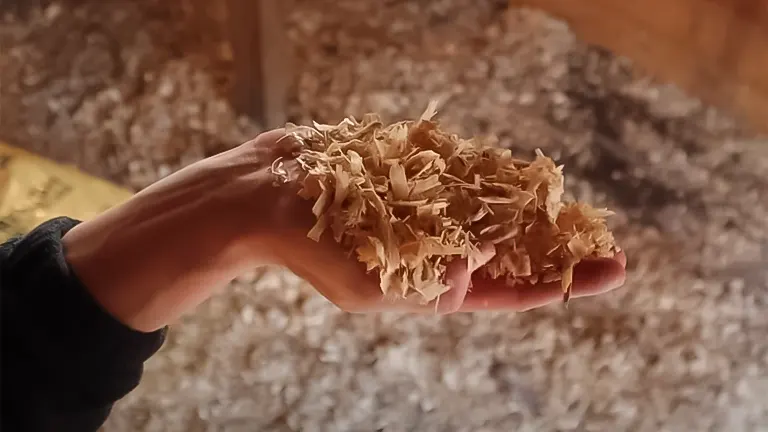How Often To Change Chicken Bedding In Your Coop
- February 8, 2024
- 1 comment
One of the most significant challenges that chicken keepers face, regardless of their experience level, is determining the optimal frequency for changing the bedding in their coops. This task is a common responsibility for all poultry owners, from novices to seasoned enthusiasts. Interestingly, this topic often goes undiscussed, creating a paradox that’s more perplexing than the practices of experienced keepers who themselves might be uncertain, and more offensive than the odors emanating from the coops of those less informed.

Neglecting regular maintenance of your chicken’s bedding can lead to more than just an unpleasant smell. It creates an environment ripe for the growth of mold and bacteria, which poses a significant health risk to your chickens. Furthermore, allowing bedding to become dusty and dirty can contribute to respiratory issues in your flock over time.
Recognizing these risks, our goal is to provide guidance and share our insights on maintaining a clean, healthy living space for your chickens. We’re committed to helping you ensure that your coop remains a comfortable, disease-free haven for your birds, advising on the best practices for changing their bedding to avoid these potential problems.
List of How Often To Change Chicken Bedding In Your Coop:
- The Role of Bedding in a Chicken Coop
- My Bedding Choice and Maintenance Routine
- Discovering the Deep Litter Method
- How Often Do I Change the Bedding Now?
- Tips for Managing Chicken Bedding
When Should I Clean Out My Chicken’s Coop?
Determining the ideal schedule for cleaning out your chicken coop is a task that varies widely due to several critical factors, including the type of bedding you use, the number of chickens you’re caring for, and the specific litter management method you employ.
Given that each of these elements can differ greatly from one chicken coop to another, the frequency with which you need to refresh your chickens’ living environment is inherently personalized. While a general guideline suggests changing the bedding in your coop every two to three weeks, and adjusting the nesting box maintenance according to necessity, it’s important to recognize that these recommendations are just starting points.
Advice from chicken keeping blogs and fellow poultry enthusiasts often reflects their individual preferences and experiences, which might not directly apply to the unique conditions of your coop. Therefore, it’s crucial to conduct regular assessments of your coop’s cleanliness and the state of your nesting boxes, making adjustments to your cleaning schedule as needed to ensure the health and comfort of your chickens.
1. The Role of Bedding in a Chicken Coop
In the realm of chicken keeping, the significance of bedding within a coop cannot be overstated. Serving as the foundation of a healthy living environment, bedding, also known as litter, fulfills several vital roles.
Firstly, it acts as a moisture absorber, effectively keeping the coop’s floor dry and mitigating the risk of dampness that can lead to disease and discomfort for the chickens. Beyond its functional purpose of odor control, bedding provides a soft, comfortable surface for chickens to rest, reducing stress and promoting well-being.

Moreover, it turns the coop into an engaging environment where chickens can exhibit natural behaviors such as scratching and pecking, contributing to their physical and mental health. While common bedding materials like straw, pine shavings, and sand are widely used, each comes with its own set of advantages and drawbacks, influencing factors such as moisture control, odor management, and the overall comfort of the chickens.
2. My Bedding Choice and Maintenance Routine
Choosing the right bedding for my chicken coop was a process of trial and error, ultimately leading me to prefer pine shavings above other materials. Pine shavings stood out for their exceptional moisture-absorbing properties and widespread availability at local farm supply stores.

Additionally, their naturally pleasant scent has been an unexpected boon, significantly extending the periods between necessary bedding changes by keeping the coop smelling fresh. Initially, I operated under the assumption that a weekly bedding change was imperative to prevent odors and disease.
This frequent change, however, proved to be overly cautious, leading to unnecessary waste and an increased workload. Through experience, I’ve adjusted my maintenance routine to better balance hygiene with efficiency, learning to extend the life of the bedding while maintaining a healthy environment for my chickens.
3. Discovering the Deep Litter Method
My approach to coop maintenance underwent a significant transformation when I discovered the deep litter method. This innovative technique involves allowing the bedding to accumulate over time, with periodic stirring to encourage decomposition and aeration.

The deep litter method has numerous benefits, foremost among them being its efficiency in reducing waste and the frequency of bedding changes. This method not only lessens the workload for the keeper but also plays a crucial role in insulating the coop during the colder months, providing a natural source of warmth for the chickens.
The gradual breakdown of organic matter within the bedding also contributes to a healthier coop environment by fostering beneficial microbial activity that combats pathogens.
4. How Often Do I Change the Bedding Now?
Adopting the deep litter method has dramatically altered my bedding management schedule. I now find myself changing the coop bedding far less frequently than before. By adding fresh pine shavings every few weeks, I maintain a comfortable and hygienic depth of bedding, while regular stirring ensures even decomposition and prevents the accumulation of moisture and ammonia.

This method has transitioned the task of changing bedding from a frequent chore to a seasonal activity, primarily dictated by the changing weather, with major cleanouts typically occurring once in the spring and once in the fall. This schedule aligns with the natural lifecycle of the coop’s ecosystem and the well-being of my chickens, ensuring they remain healthy and happy throughout the year.
5. Tips for Managing Chicken Bedding
Here are a few tips I’ve learned along the way:

- Monitor Moisture Levels: Too much moisture can lead to odor problems and disease. If the bedding feels too wet, add more dry material to absorb the excess moisture.
- Stir Regularly: This promotes aeration and speeds up the decomposition process, making the environment healthier for your chickens.
- Consider Your Climate: Your bedding change frequency might vary depending on your local climate. More humid areas may require more frequent changes.
- Observe Your Flock: Pay attention to your chickens’ behavior and health. If you notice any issues, assess whether your bedding management practices might need adjusting.
Factors Decision Making Variables For User’s
Deciding on the frequency of changing chicken coop bedding hinges on several interrelated factors. The choice of bedding material, such as pine shavings versus straw, significantly influences how often it needs to be replaced due to differences in absorbency and odor control. The size of your flock also matters; more chickens mean quicker bedding contamination.
Methods like the deep litter technique can reduce the need for frequent changes by promoting beneficial composting processes. The design of your coop, especially its ventilation, and seasonal considerations also affect bedding longevity. Ultimately, balancing these elements helps maintain a clean, healthy environment for your chickens with a schedule tailored to your specific setup.
Related Articles:
- Best Bedding For Chickens
- Best Safe Chicken Coop Heater
- 8×8 Chicken Coop Plans
- Turning a Shed Into a Chicken Coop
- How to Make a Chicken Coop Out of Pallets
- Best Sand for Chicken Coop
- How To Insulate a Chicken Coop
- How To Heat a Chicken Coop
- How To Keep Water from Freezing in Chicken Coop
- How to Build a Chicken Coop
- How To Build Chicken Nesting Boxes
- How to Raise Happy and Healthy Chickens in Your Backyard
- When Can Chicks Go Outside? Timing and Tips for a Smooth Transition
- 12 Reasons why Ducks are Better than Chickens
- Best Automatic Chicken Coop Doors 2024: Expert Reviews & Buyer’s Guide
- Best Fans for Chicken Coop 2024: Effective Cooling Solutions Reviewed
Final Concluding Thoughts
In conclusion, mastering the appropriate frequency for swapping out the bedding in your chicken coop hinges on a thorough comprehension of several key factors: the specific conditions of your environment, the distinct requirements of your chickens, and the inherent properties of the bedding material you’ve selected. Adopting the deep litter method has not only lessened the amount of effort required for coop maintenance but has also had a positive impact on the overall health and cleanliness of my chicken’s living space.
However, it’s crucial to recognize that the effectiveness of any general guidance, including the deep litter method, must be evaluated and adjusted to suit the unique circumstances of your own coop. Engaging in chicken keeping is an ongoing process of discovery and adaptation, and I am excited to contribute to this community by sharing the insights I’ve gained from my own experiences. My hope is to assist fellow enthusiasts in navigating the complexities of maintaining a healthy and happy environment for their chickens. Here’s to a rewarding journey in chicken keeping—happy farming!
Frequently Asked Questions
- What factors determine how often I should change my chicken coop bedding?
The frequency of bedding changes depends on several factors including the size of your coop, the number of chickens, the type of bedding material used, and your management practices such as the deep litter method or regular cleanouts. - Is there a general guideline for how often to change chicken bedding?
While specific needs vary, a general guideline is to change the coop bedding every 2-3 weeks. However, this can vary based on your management method, the type of bedding, and the coop’s conditions. - What signs indicate it’s time to change the bedding?
You should consider changing the bedding when you notice strong odors, visible accumulation of waste, dampness, or when the bedding material is broken down and no longer absorbent. - Can the deep litter method reduce how often I need to change the bedding?
Yes, the deep litter method involves layering fresh bedding over the old, allowing it to compost over time. This method can significantly reduce the frequency of complete bedding changes, often to just once or twice a year. - Does the type of bedding material affect how often it needs to be changed?
Absolutely. Some bedding materials, like pine shavings, are more absorbent and control odors better than others, such as straw, potentially reducing the need for frequent changes. - How does the number of chickens I have impact the frequency of bedding changes?
More chickens produce more waste, which can saturate the bedding more quickly. Consequently, coops housing larger flocks may require more frequent bedding changes to maintain cleanliness and health. - What is the best way to dispose of old chicken bedding?
Old bedding can be composted, turning it into a valuable resource for your garden. Ensure it’s properly composted to kill any pathogens before use. - How do I know if I’m changing my chicken bedding too infrequently?
Signs of infrequent changes include persistent bad odors, increased fly activity, visible mold growth, and behavioral changes in your chickens, such as avoiding the coop. - Can changing the bedding too often be harmful?
Excessively frequent changes can disrupt the natural decomposition process beneficial in the deep litter method and may unnecessarily increase your workload and expenses. - What should I do if my chickens have respiratory issues and I suspect the bedding is the cause?
First, assess the type and condition of the bedding. Dusty or moldy bedding can cause respiratory issues. Switch to a less dusty material, ensure the coop is well-ventilated, and adjust your cleaning schedule to improve conditions.
We welcome your input! Dive into the comments section below to share your own experiences and tips regarding the frequency of changing chicken coop bedding. Have you tried various bedding types, adhered to a particular cleaning schedule, or embraced the deep litter method? Your knowledge and personal stories are crucial for our community. They could guide other poultry enthusiasts in optimizing their coop maintenance routines, ensuring a clean and comfortable habitat for their chickens. Let’s collaborate and exchange insights to aid each other in making well-informed choices about managing chicken coop bedding!

Edward Smith
Forestry AuthorWoodworking is about more than crafting; it's a harmonious connection with nature, mastering tools, and preserving our environment. I'm here to share my knowledge and experiences with you, forging a future where we can embrace wood's beauty and utility while safeguarding our forests' health and diversity.













Highly recommended. Can I have a newsletter on this. What's the ratio of layers to nest?.
Eugene Martey Marnah
February 13, 2024 5:59 am